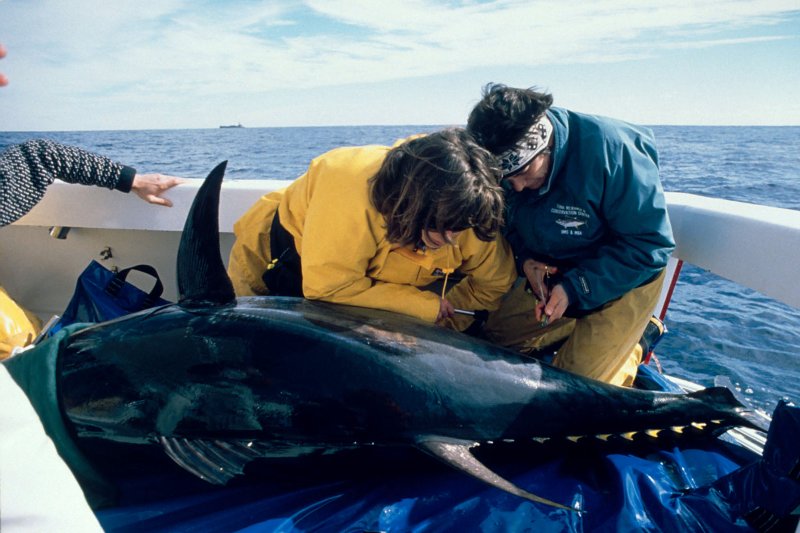Researchers tag a giant bluefin tuna off the coast of North Carolina. Tuna must pack on nearly 200 pounds of fat for their trip from their feeding grounds in Maine to the Gulf of Mexico, where they mate. File photo by rlw/Stanford University/Monterey Bay Aquarium/UPI. |
License Photo
ORONO, Maine, June 22 (UPI) -- The world's oceans have their problems. But in the Gulf of Maine, a lack of suitable tuna prey shouldn't have been one of them.
Research has shown an uptick in Atlantic herring (lupea harengus) in recent years, a favorite snack of Atlantic bluefin tuna (Thunnus thynnus). But studies suggest tuna populations in the Atlantic -- which use the water off the coast of Maine as foraging grounds -- are struggling.
Scientists at the University of Maine wondered: how could bluefin tuna be starved for calories in a sea full of fish?
It turns out, an abundance of Atlantic herring isn't good news for bluefin tuna during foraging. The herring population growth has translated to smaller body sizes, meaning tuna have to eat more fish to pack on the right amount of traveling fat.
Tuna spend several months off the coast of Maine, attempting to pack on the pounds before their migration to mating grounds farther south -- so they need to be efficient.
Chasing more fish burns more calories. During foraging, predators are looking for the right balance between energy expenditure and calorie payoff in terms of prey size and elusiveness. In this instance, chasing more small fish isn't worth it.
So tuna in the Gulf of Maine have relocated their hunting grounds to offshore banks and locales on the northwest Atlantic shelf, where herring are bigger.
But an abundance of small pelagic fish, like sardines, herrings and anchovies surely isn't bad for everyone. As researchers explained in a new paper, published this week in the journal Marine Ecology Progress Series, fisheries managers must please the hungry mouths of multiple species.
"Fisheries managers will now face the challenge of how to manage for high abundance of small pelagic fish," scientists write, "which benefits benthic fishes and mammalian predators, and maintain a robust size structure beneficial for top predators with alternative foraging strategies."















